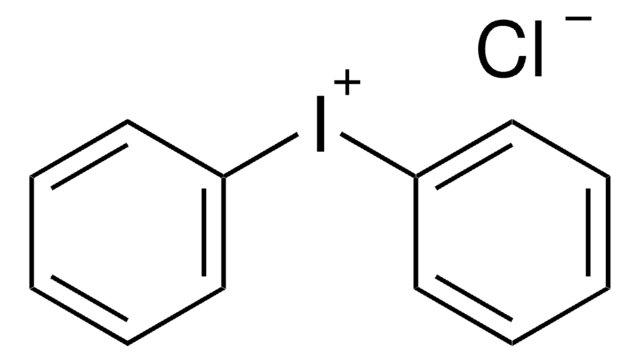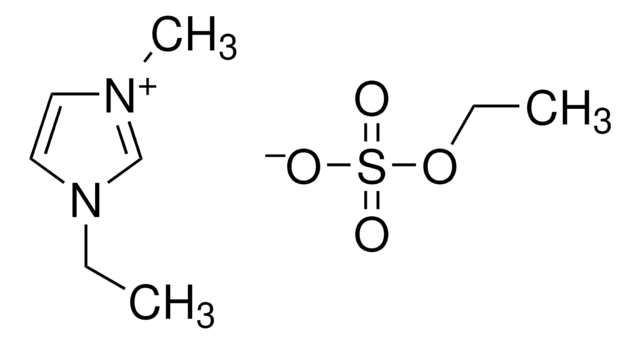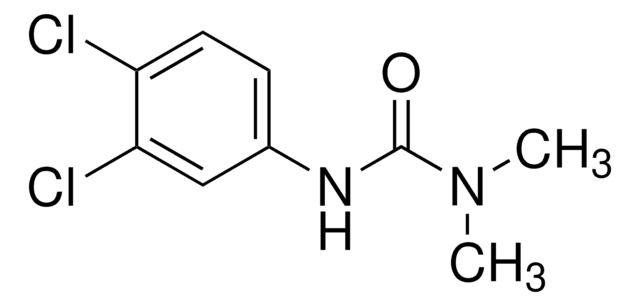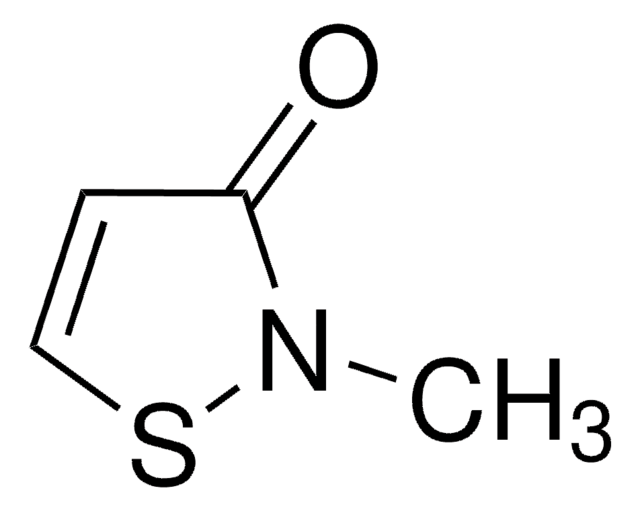105937
3,4,4′-Trichlorocarbanilide
99%
Synonym(s):
1-(4-Chlorophenyl)-3-(3,4-dichlorophenyl)urea, TCC, Triclocarban
About This Item
Recommended Products
Agency
EPA 1694
Quality Level
vapor pressure
<0.1 mmHg ( 25 °C)
Assay
99%
form
solid
mp
254-256 °C (lit.)
solubility
methanol: soluble
application(s)
environmental
functional group
amine
chloro
SMILES string
Clc1ccc(NC(=O)Nc2ccc(Cl)c(Cl)c2)cc1
InChI
1S/C13H9Cl3N2O/c14-8-1-3-9(4-2-8)17-13(19)18-10-5-6-11(15)12(16)7-10/h1-7H,(H2,17,18,19)
InChI key
ICUTUKXCWQYESQ-UHFFFAOYSA-N
Gene Information
human ... EPHX2(2053)
mouse ... Ephx2(13850)
Looking for similar products? Visit Product Comparison Guide
Related Categories
General description
Application
Biochem/physiol Actions
Disclaimer
Signal Word
Warning
Hazard Statements
Precautionary Statements
Hazard Classifications
Aquatic Acute 1 - Aquatic Chronic 1
Storage Class Code
11 - Combustible Solids
WGK
WGK 3
Choose from one of the most recent versions:
Already Own This Product?
Find documentation for the products that you have recently purchased in the Document Library.
Customers Also Viewed
Global Trade Item Number
| SKU | GTIN |
|---|---|
| 105937-500G | |
| 105937-100G | 4061838673299 |
| 105937-5G | 4061838673305 |
Our team of scientists has experience in all areas of research including Life Science, Material Science, Chemical Synthesis, Chromatography, Analytical and many others.
Contact Technical Service



![2,2′-Methylenebis[6-(2H-benzotriazol-2-yl)-4-(1,1,3,3-tetramethylbutyl)phenol] 99%](/deepweb/assets/sigmaaldrich/product/structures/236/824/ce89085c-b9e1-4ea0-8157-44b6f9466ed6/640/ce89085c-b9e1-4ea0-8157-44b6f9466ed6.png)













